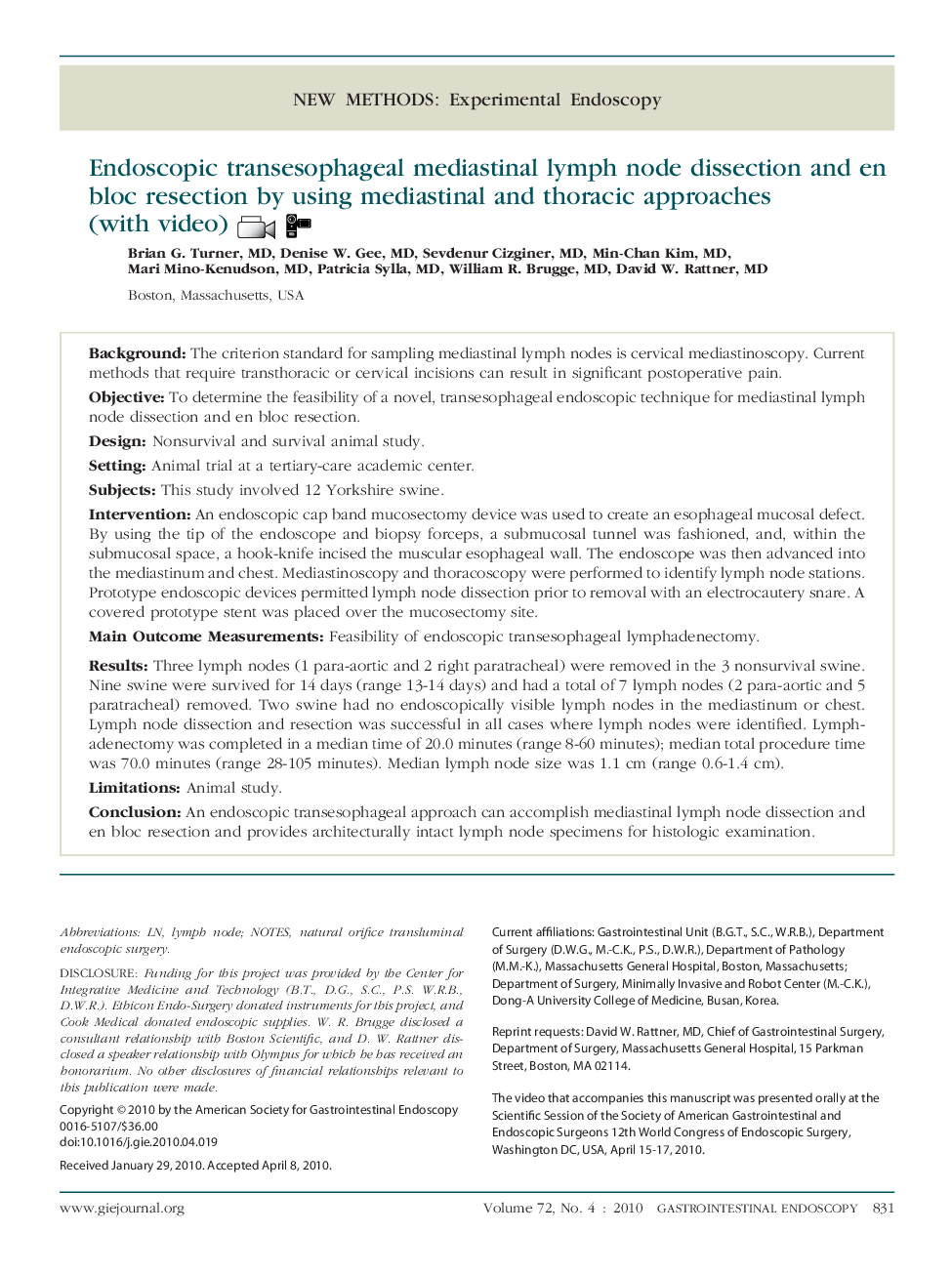| Article ID | Journal | Published Year | Pages | File Type |
|---|---|---|---|---|
| 3305249 | Gastrointestinal Endoscopy | 2010 | 5 Pages |
BackgroundThe criterion standard for sampling mediastinal lymph nodes is cervical mediastinoscopy. Current methods that require transthoracic or cervical incisions can result in significant postoperative pain.ObjectiveTo determine the feasibility of a novel, transesophageal endoscopic technique for mediastinal lymph node dissection and en bloc resection.DesignNonsurvival and survival animal study.SettingAnimal trial at a tertiary-care academic center.SubjectsThis study involved 12 Yorkshire swine.InterventionAn endoscopic cap band mucosectomy device was used to create an esophageal mucosal defect. By using the tip of the endoscope and biopsy forceps, a submucosal tunnel was fashioned, and, within the submucosal space, a hook-knife incised the muscular esophageal wall. The endoscope was then advanced into the mediastinum and chest. Mediastinoscopy and thoracoscopy were performed to identify lymph node stations. Prototype endoscopic devices permitted lymph node dissection prior to removal with an electrocautery snare. A covered prototype stent was placed over the mucosectomy site.Main Outcome MeasurementsFeasibility of endoscopic transesophageal lymphadenectomy.ResultsThree lymph nodes (1 para-aortic and 2 right paratracheal) were removed in the 3 nonsurvival swine. Nine swine were survived for 14 days (range 13-14 days) and had a total of 7 lymph nodes (2 para-aortic and 5 paratracheal) removed. Two swine had no endoscopically visible lymph nodes in the mediastinum or chest. Lymph node dissection and resection was successful in all cases where lymph nodes were identified. Lymphadenectomy was completed in a median time of 20.0 minutes (range 8-60 minutes); median total procedure time was 70.0 minutes (range 28-105 minutes). Median lymph node size was 1.1 cm (range 0.6-1.4 cm).LimitationsAnimal study.ConclusionAn endoscopic transesophageal approach can accomplish mediastinal lymph node dissection and en bloc resection and provides architecturally intact lymph node specimens for histologic examination.
